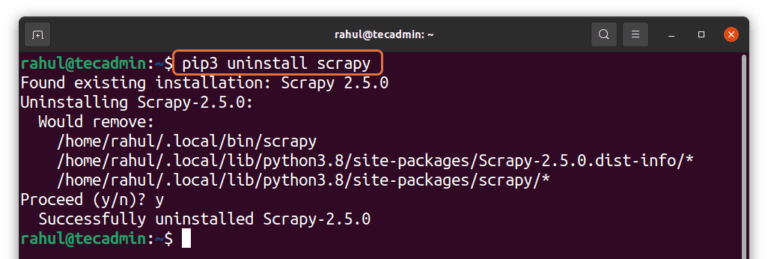

Upgrading from Ansible 3 or ansible-core 2.10Īnsible-base only exists for version 2.10 and in Ansible 3.
Pip3 upgrade pip install#
$ pip uninstall ansible $ pip install ansible Īs explained by the message, to upgrade you must first remove the version of Ansible installed and then install it to the latest version. Please uninstall ansible and install the new version: pip uninstall ansible pip install ansible-base. Installing ansible-base with ansible-2.9 or older currently installed with pip is known to cause problems. Cannot install ansible-base with a pre-existing ansible=2.x installation. If you do not uninstall the older version of Ansible, you will see the following message, and no change will be performed.

When you upgrade from version 2.9 and older to version 2.10 or later, you need to uninstall the old Ansible version (2.9 or earlier) before upgrading. Starting in version 2.10, Ansible is made of two packages. Installing Ansible in a virtual environment with pip:Īnsible can also be installed inside a new or existing virtualenv : $ python -m virtualenv ansible # Create a virtualenv if one does not already exist $ source ansible/bin/activate # Activate the virtual environment $ python -m pip install ansible If you have an older version of pip installed, you can upgrade by following pip’s upgrade instructions. Please make sure you have the latest version of pip before installing Ansible.

Older versions of pip default to, which no longer works. Installing with - user is recommended unless you understand fully the implications of modifying global files on the system. Since pip does not coordinate with system package managers, it could make changes to your system that leaves it in an inconsistent or non-functioning state. Use pip with sudo command in order to implement global changes to the system. If you would like to install Ansible globally, run the following commands: $ sudo python get-pip.py $ sudo python -m pip install ansible If you will be in need of using the paramiko connection plugin or modules that require paramiko, install the necessary module: $ python -m pip install -user paramiko $ curl -o get-pip.py $ python get-pip.py -userĪfter passing the installation of pip software, you can install Ansible. If pip is not already have been installed on your system, then you must execute upcoming commands to install all package into your system. We have covered some troubleshooting methods for the error pip: command not found.You can install Ansible on many systems with pip. Pip is a useful command to install Python packages. Now try to use the pip command – it should work without errors. This command installs the pip command onto your system.
Pip3 upgrade pip code#
It is better to upgrade your code base to Python 3 and use the latest version of pip.įollow the below steps only if you are using Python2: Note that Python 2 has reached end of life. If your code is in Python 2 and you still wish to use an older version of pip, you can follow the below steps.
Pip3 upgrade pip mac#
You can check your Python version on Linux and Mac like this: I am using Python3

For example, pip3 works for Python3, whereas pip works only for Python2. It is possible that you are trying to use the wrong version of pip. If pip is still not working, try to upgrade pip to the latest version: python -m pip install -upgrade pip Output after upgrading pip If pip is not installed, you can follow the install steps here for your respective OS. python3 -m pip -version Here's the output if pip is installed correctly On Mac and Linux, you can use the below command to check if pip is installed. Troubleshooting the error pip: command not found But on Mac, you do not need to install pip manually, as long as you are working with Python 3.x. On Linux, you must install the pip package manager separately as it is an independent package.
Pip3 upgrade pip how to#
You'll learn how to use it, and how to handle pip errors, in this article. With pip, you can install, upgrade, and uninstall various Python packages. And there is a command available for that known as 'pip'. When using Python, you might need to install and use certain packages.


 0 kommentar(er)
0 kommentar(er)
